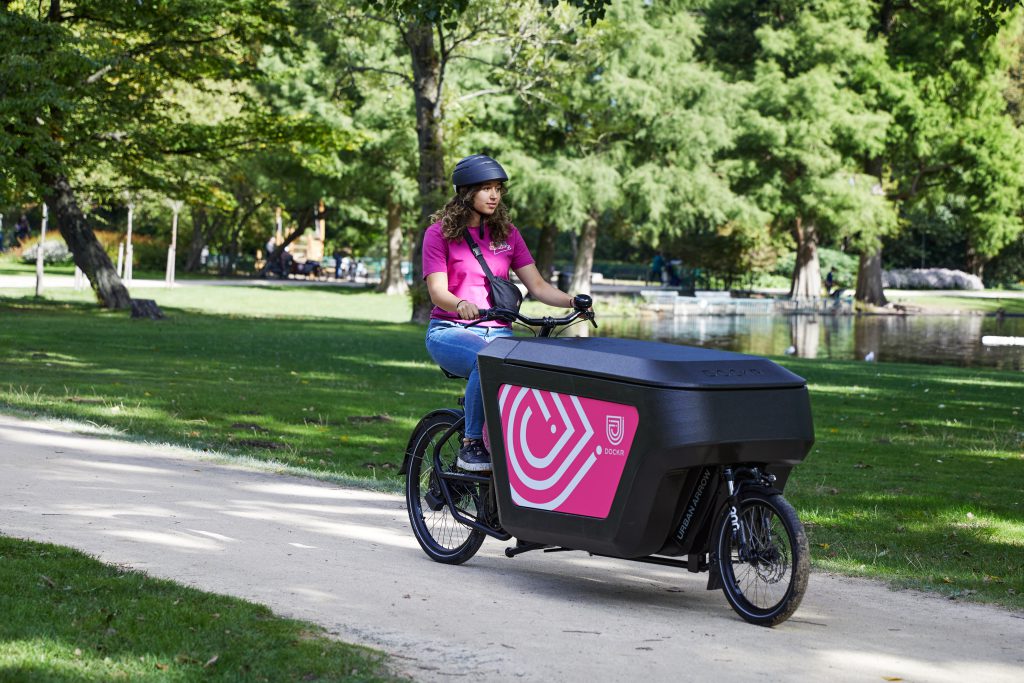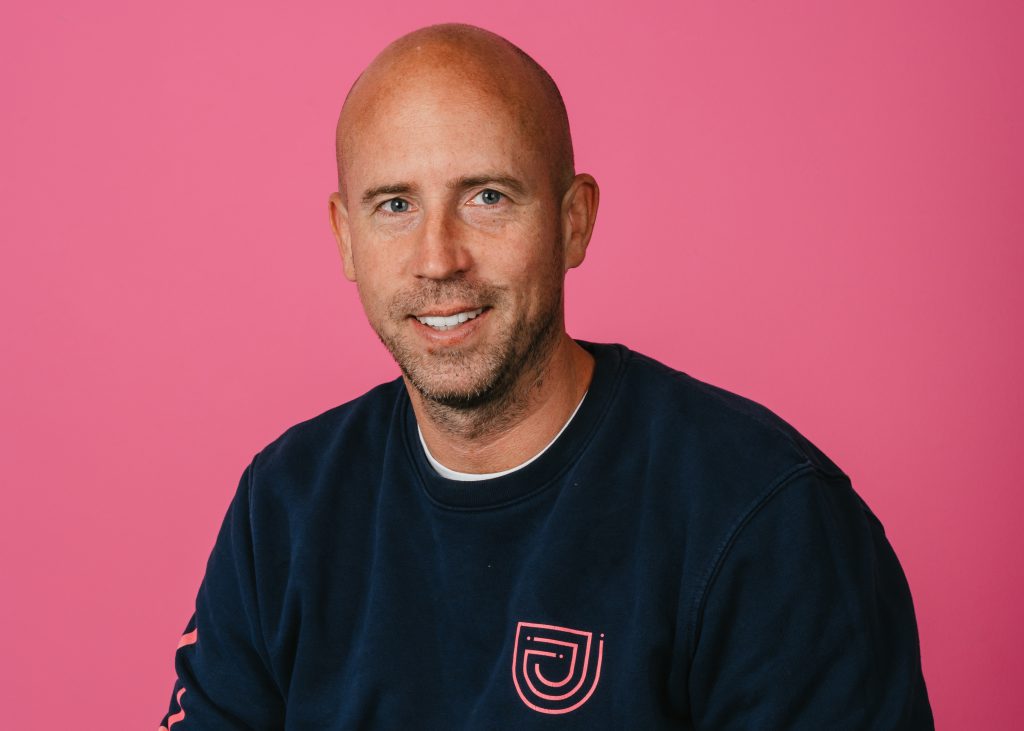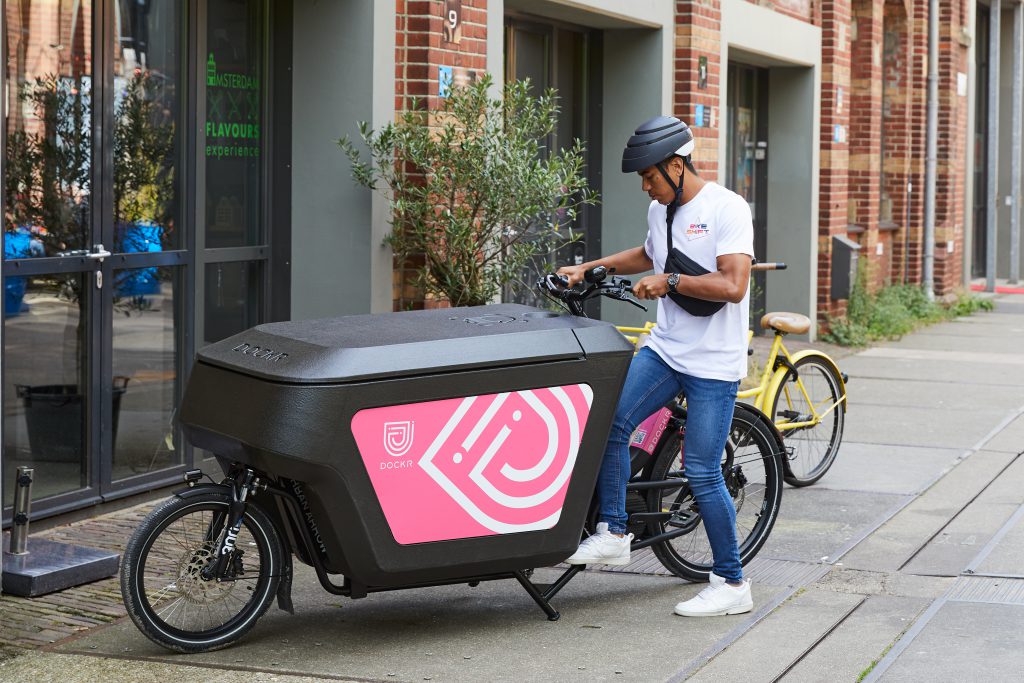2023 according to DOCKR: five trends that will shape the future of mobility

Managing a large fleet of cargo bikes across the Netherlands, Germany and Belgium is no mean feat. And nobody is better placed to know this than Kees Jan Blankestijn, Co-founder and Head of Product and Innovation at DOCKR – a unique company which you could think of as the B2B Netflix of cargo bikes. We sat down with Kees Jan to examine some of the trends which will shape the cargo bike industry, mobility and the sharing economy in 2023 and beyond.
1. It’s the economy, stupid…
In true direct Dutch style, we first address the elephant in the room: the world economy. With a lot of uncertainty around at the moment, what effects will this have in 2023 on the kinds of businesses that use DOCKR? Kees Jan says that although the economic situation does come with a lot of risks, he also sees reasons to be positive. Opportunities, even.
“On the one hand, it’s now more difficult for new companies to get funded” he says. “But on the other hand, the situation pushes every company to do their job better – and that’s a good thing. It is opening people up to do things better. People are asking themselves what the alternatives are; and there the cargobike has a sweet spot in efficiency.”
“We saw it with corona too. At the start of the pandemic everybody thought that the economic situation would be awful for months and months. But if you look at the logistics sector, it was the biggest growth opportunity ever. The last two years has shown that a market can change and can accept a new form of mobility if it is willing to do so. Change like this often coincides with a big impact; it has made everybody way more focused on efficiency and quality.”
“At the same time extreme growth is now off the table; people are being way more realistic. A lot of companies are now not only looking years ahead at their sales numbers, but also at how they are going to tackle this year and making the changes they need to make in order to survive.”

2. Vehicle diversity
Kees Jan next acknowledges the growing diversity of zero-emission vehicles on offer – a diversity which is having some unexpected repercussions (more on that later though). “We need to accept that when we talk about replacing diesel vans, we don’t just mean cargo bikes; Light Electric Vehicles (LEVs) are in there too – we believe in whatever gets the job done best. Some organisations that use diesel vans would switch to an electric van, but not to a cargo bike. So, I do think that it is important that with the bike we can show that a combination of different solutions can be the most efficient way. If you need to deliver to non-urban areas, you need to have an option too.”
“We are definitely investigating what kind of larger cargo bike – be it a 3-wheeler or 4-wheeler – could enter our range in 2023. Big market players are already showing how they can be integrated into fleets. Not for greenwashing, not just using marketing money; these organisations only do something when it’s really effective. So that shows that other companies can do it too.”
“That’s how we answer the question of how to fill the gap between cargo bikes and high-capacity vans. Because something is missing there, and I think that, until now, the market hasn’t fully answered that question yet.”
3. Regulators, mount up!
You could argue, then, that the market is ready for larger cargo bikes and LEVs. But according to Kees Jan, one thing is holding DOCKR back: regulation. “We need to know when and where bigger vehicles will be allowed, and when not? What will the rules be? They have a way higher payload, so how will that be dealt with in the city?”
“Regulation is needed to let the segment grow further in potential, but these aren’t decisions we can make – we’re not the government. So that’s something we hope they will confirm in 2023 or 2024. That would speed things up; that’s what we are waiting for to truly kick it off.”
“DOCKR doesn’t adopt bike models into our assortment just for fun. We work sustainably and that means bikes need to be operational for 3-5 years minimum. We need certainty that a model won’t become illegal in two years’ time. And not just at the national level but also the European level too. But it shouldn’t be regulation that makes it harder or more expensive to run cargo bikes. Any regulations should allow organisations to legally use cargo bikes in a user-friendly way. Demands like requiring driving licences or an 18-year-old minimum age limit are not workable. Right now, anyone can ride a cargo bike and I believe that that basis should remain.”
“Having said that, there is another side to this. The risks on bike paths – with more and more cargo bikes using them – should be managed. We all need to find a way to work and live with each other. Parents should feel safe riding a bike on our streets with their children. Delivery drivers should also feel safe, but they also have a greater obligation to act safely too, in everyone’s interest. And a lot of responsibility ultimately lies with businesses.”
“I’m curious to see how this will evolve. I hope it will be a combination that allows businesses to integrate cargo bikes into their processes with a low, achievable barrier.”

4. IoT is power
Another area in which DOCKR hopes to make strides in 2023 is in connectedness. “In 2023 we’re going to be preoccupied with how we can help customers with more insights – and that means data” explains Kees Jan. “A lot of our customers want our help to use their bikes more effectively; how to get more control over their costs. To do this, we’ll be connecting up our whole fleet with IoT devices that measure more than 30 variables. This will monitor, for example, when the bike should be serviced – meaning our maintenance level will be higher and can be customised.”
Another area the devices will give insights into is rider behaviour. “If we see, for example, high G-forces being generated we can inform fleet managers that bikes may be being treated roughly. We can then look together at how things can be improved and help them avoid damage costs.”
Kees Jan is keen to point out that it’s not a situation where DOCKR points the finger: “We’re not the police; it’s a collaborative partnership with our customer. Based on the insights we get from the IoT unit – like when certain variables are higher or lower than normal – we’ll look together at how to react to patterns. If you don’t have these insights, you can’t react. Right now, they don’t have them, so I think 2023 will be the year where we can truly help our customers achieve a higher level of efficiency in their organisations.”
5. Coming full circle
Another thing on DOCKR’s agenda for next year is to scale-up their efforts in the area of circularity: “Our self-developed cargo box is currently at least 80% recyclable at the end of its usable life. That’s very important to us, and next year we want to do even better on this” Kees Jan makes clear.
“With the bikes themselves, our maintenance programme ensures their working lives are extended as long as possible – we don’t produce them ourselves so that’s all we can do on that. But because we do produce the box ourselves, that’s a different story. The one we are developing is even better on circularity – we’ll get as close to 100% as we can on that.”
Look out in late January 2023 for an interview with DOCKR’s Product Development Lead Jurjen Vellinga. We take a deep-dive into DOCKR’s box and other technology the development team is working on.
By Tom Parr of the International Cargo Bike Festival
